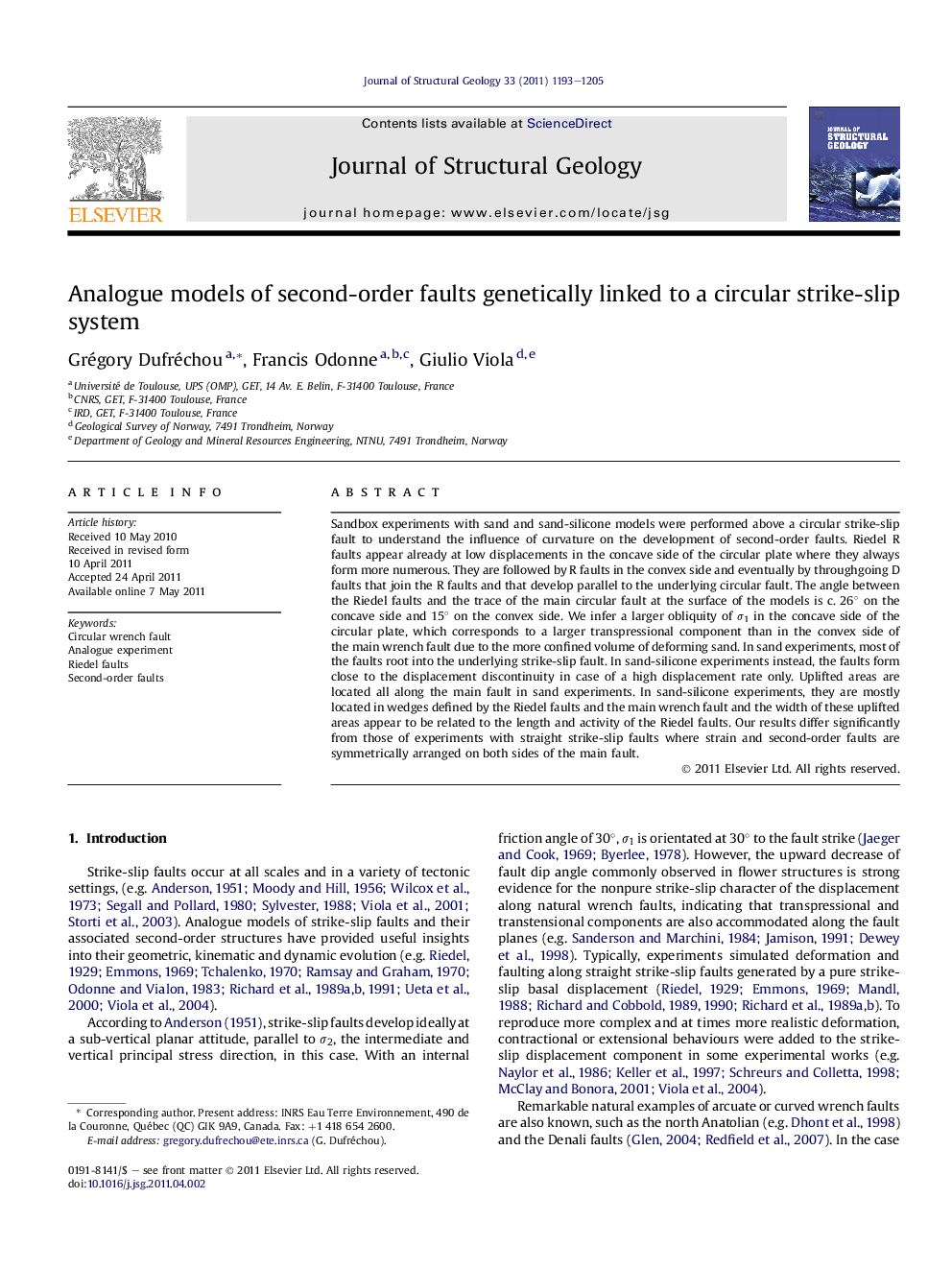| Article ID | Journal | Published Year | Pages | File Type |
|---|---|---|---|---|
| 4733593 | Journal of Structural Geology | 2011 | 13 Pages |
Sandbox experiments with sand and sand-silicone models were performed above a circular strike-slip fault to understand the influence of curvature on the development of second-order faults. Riedel R faults appear already at low displacements in the concave side of the circular plate where they always form more numerous. They are followed by R faults in the convex side and eventually by throughgoing D faults that join the R faults and that develop parallel to the underlying circular fault. The angle between the Riedel faults and the trace of the main circular fault at the surface of the models is c. 26° on the concave side and 15° on the convex side. We infer a larger obliquity of σ1 in the concave side of the circular plate, which corresponds to a larger transpressional component than in the convex side of the main wrench fault due to the more confined volume of deforming sand. In sand experiments, most of the faults root into the underlying strike-slip fault. In sand-silicone experiments instead, the faults form close to the displacement discontinuity in case of a high displacement rate only. Uplifted areas are located all along the main fault in sand experiments. In sand-silicone experiments, they are mostly located in wedges defined by the Riedel faults and the main wrench fault and the width of these uplifted areas appear to be related to the length and activity of the Riedel faults. Our results differ significantly from those of experiments with straight strike-slip faults where strain and second-order faults are symmetrically arranged on both sides of the main fault.
► The faults propagate on both sides of circular strike-slip fault although they remain more numerous on the concave side. ► The angle between the R and D fault is always more opened on the concave side of the plate than on the convex side. ► The asymmetry of second-order faults can constitute relevant indications of a circular component along a wrench fault.
